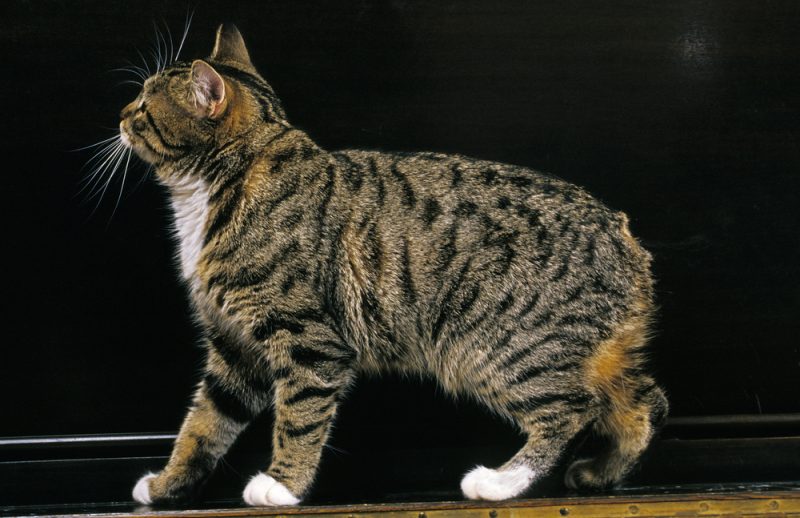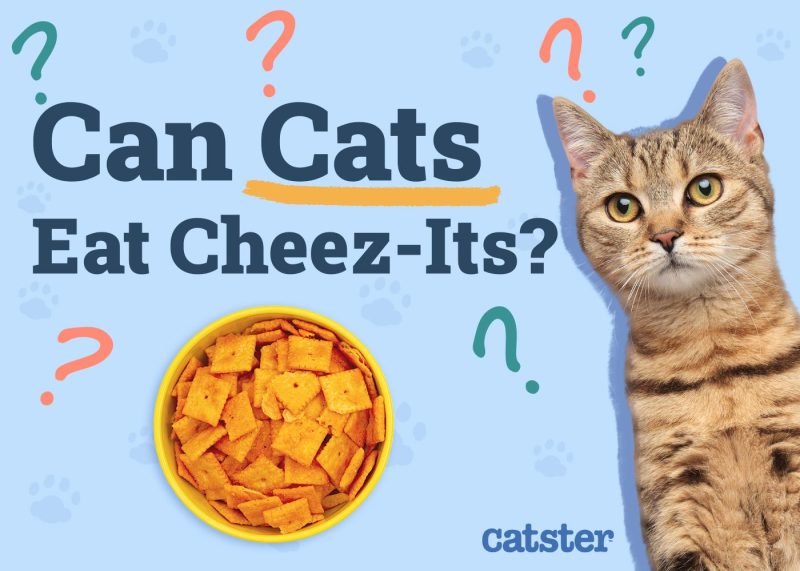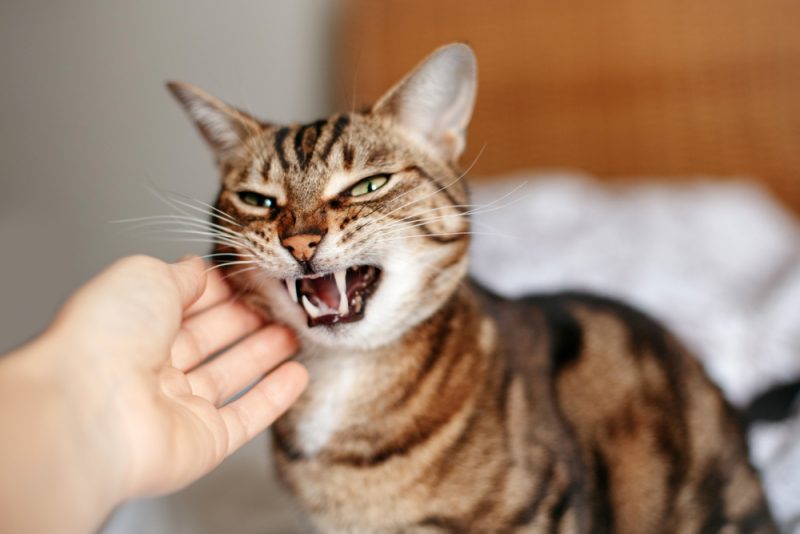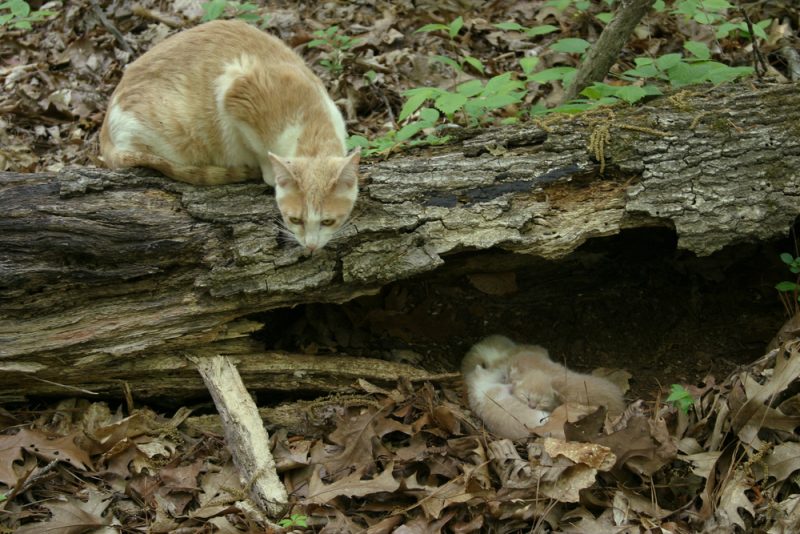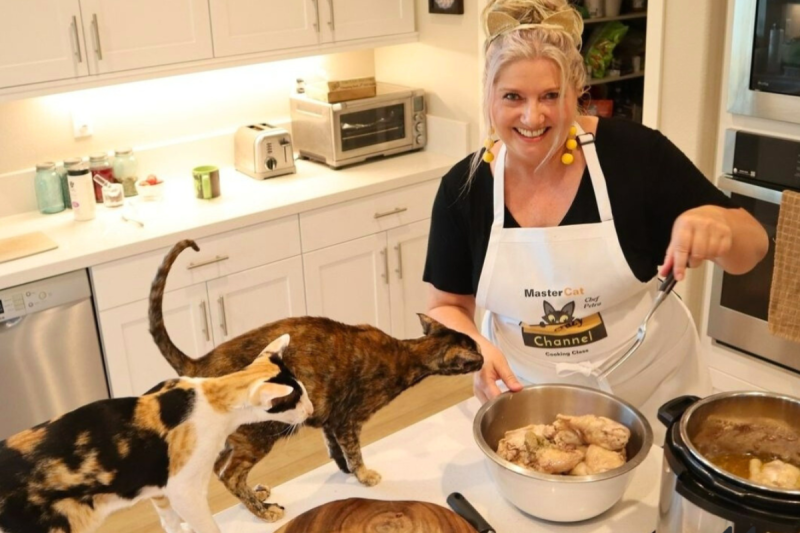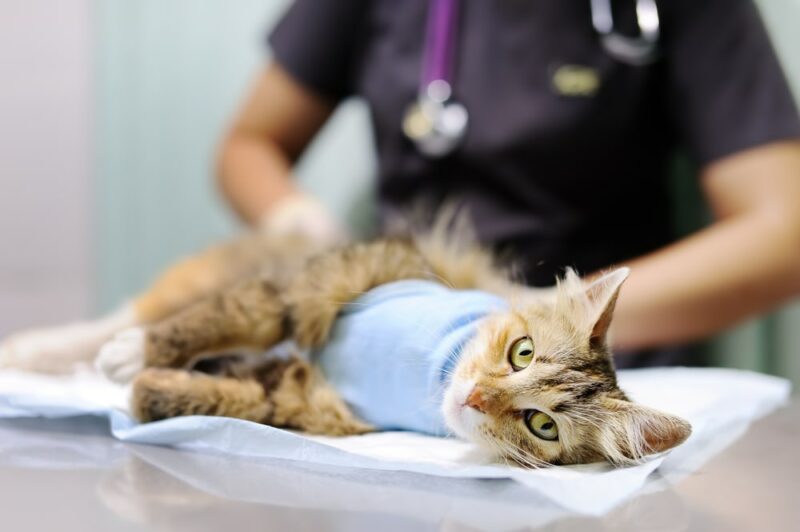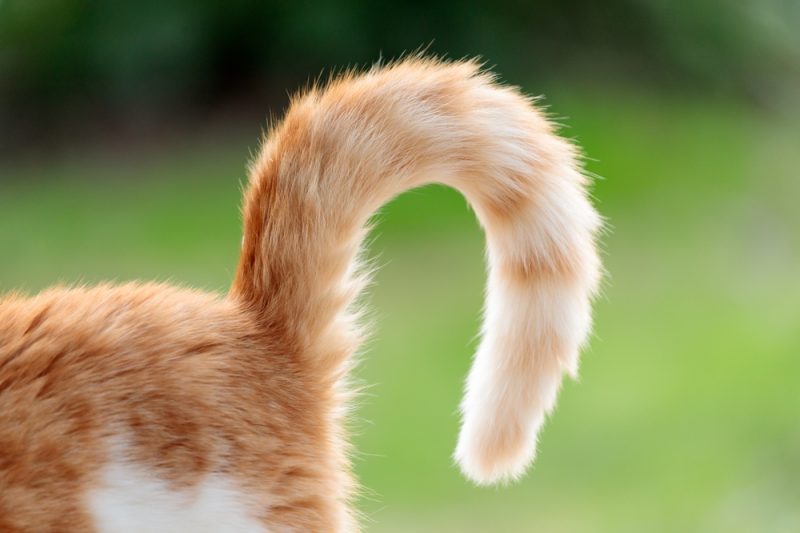The Manx cat is a breed of domestic cat originating on the Isle of Man. Although it’s possible for a Manx cat to have a normal length tail, the breed is best known for being tailless or having a small stub of a tail. While this unique feature sets the breed apart from other cats, it’s also associated with various health issues. Some Manx cats suffer from a range of spinal and neurological defects known as Manx syndrome as a result of their absent or short tails.

What Is Manx Syndrome?
Manx syndrome is a collection of health issues seen in Manx cats. While the syndrome is most common in Manx cats, it’s possible for mixed breed cats without tails to be affected.
The syndrome is associated with the Manx breed’s characteristic feature – an absent or shortened tail. The same gene that causes an absent or shortened tail, also causes developmental abnormalities of the spinal cord and the nerves supplying the bladder, colon, hindlimbs, and perineal region. As a result, cats with Manx syndrome have issues with defecation, urination, and hind leg movement. Manx cats with a short tail are also prone to painful arthritis in the joints between the deformed tail bones.
Not all Manx cats develop Manx syndrome, although the likelihood of a cat developing neurological issues is related to how short the tail is. Some Manx cats appear normal, apart from their short tails, and show no signs of spinal cord issues. Others have major abnormalities of the spine and spinal cord and cannot lead normal lives.
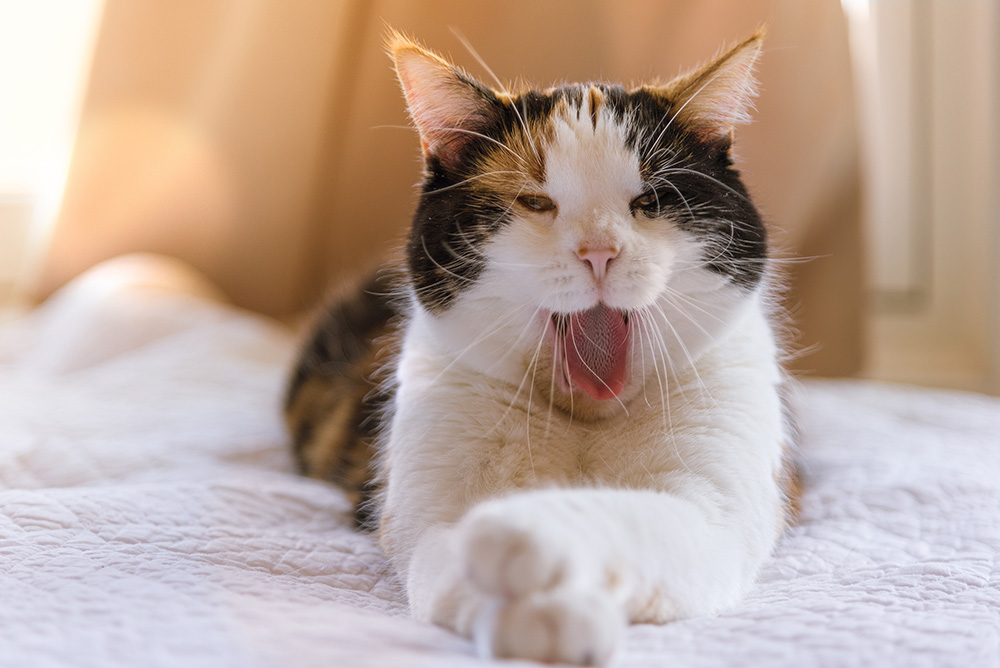
What Are the Signs of Manx Syndrome in Cats?
The signs of Manx syndrome vary depending on how severely a cat’s spinal cord is affected.
- Absent tail
- Inability to control the release of urine
- Secondary urinary tract infections
- Inability to control the release of feces
- Constipation due to loss of nerve function
- Megacolon (distension of the colon)
- Partial paralysis of the back legs
- Incoordination of the back legs
- Lack of sensation of skin around the anus and genitals
- Rectal prolapse, where some of the rectum protrudes and prolapses through the anus

What Are the Causes of Manx Syndrome?
Manx syndrome is caused by a genetic mutation, passed on from parents to their kittens. This genetic mutation causes the abnormal development of the last vertebrae (bones) of the spine that make up the tail.
Fetal Development
While a kitten is still a fetus, the development of the spine is closely linked to the development of the spinal cord. So, if a cat has any developmental abnormalities of the spine (like being tail-less or having a shortened tail), there will often be spinal cord abnormalities present. It is these problems of the spinal cord that cause the neurological issues seen in cats with Manx syndrome. Cats with Manx syndrome can have varying degrees of spinal defects and therefore the severity of the condition can vary.
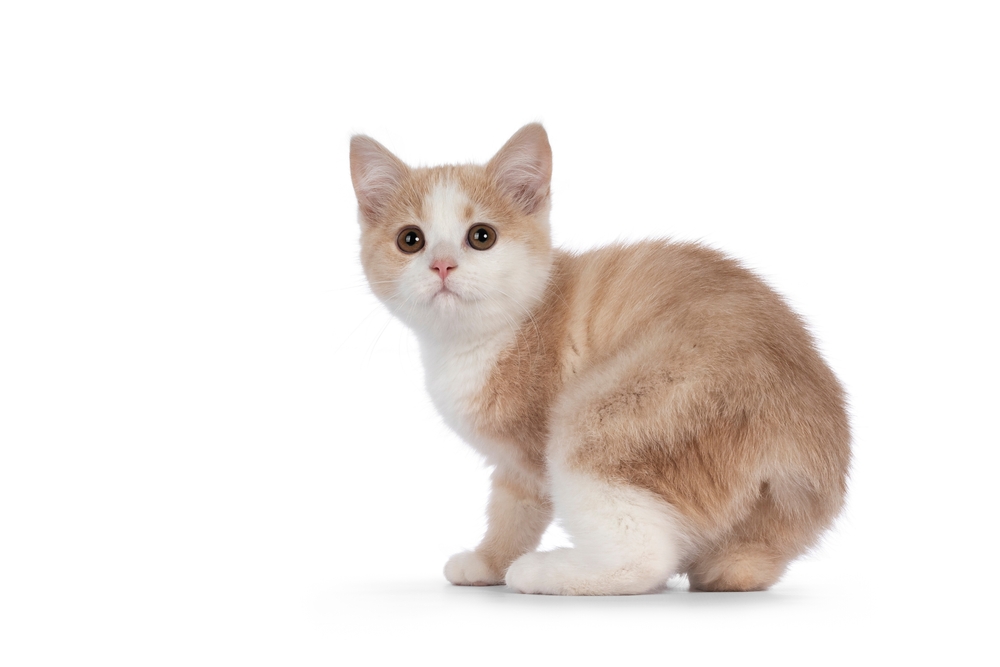
The Role of Genetics
Tailless-ness in Manx cats is due to a mutant, autosomal dominant gene. “Autosomal” means that the specific gene is located on one of the numbered chromosomes and not on a sex chromosome. The disease is therefore not related to the sex of the cat and both male and female Manx cats can be affected. “Dominant” means that a single copy of the mutated gene (from one parent) is enough to cause the defect. In fact, having two copies of the mutated gene causes such severe problems that kittens usually die before they are born.
The mutant gene does not always “penetrate fully” or show its full effect, therefore different tail lengths are seen.
- Rumpy – no tail
- Rumpy riser – a bump, or rump of a tail
- Stumpy – a small, partial tail
- Stubby – a short tail
- Tailed or longy – a half-length or normal tail
The likelihood of a cat developing issues is directly related to how short the tail is.

What Is the Treatment for Manx Syndrome?
There is unfortunately no curative treatment for Manx syndrome. Instead, treatment is supportive and varies based on the individual cat’s condition.
- Stool softeners to treat constipation
- Manually emptying the bladder of cats that are unable to control their bladders
- Antibiotics to treat secondary urinary tract infections
- Daily grooming for cats incapable of controlling their bowels or bladder.
Some cats are so badly affected that it’s impossible for them to have a good quality of life. In these cases, euthanasia is recommended.
How Do I Care for a Cat With Manx Syndrome?
Daily grooming is essential for cats that can’t control their bowels or bladder. Chronic contact of the skin with urine or feces can lead to urine scald, dermatitis, and infections, so it’s important to keep your cat clean.
You’ll also need to make some changes around the house to help your pet. Make sure that your cat’s food and water bowls are easily accessible, and opt for a low-sided, spacious litter box to accommodate any mobility challenges that your cat may have. Ramps or steps can help your cat access elevated surfaces like beds or couches. If you have slippery floors, it’s worth investing in non-slip rugs to help with grip.
Cats with Manx syndrome should be kept indoors. Cats with mobility issues are more vulnerable to attacks by other cats and dogs. They’re also at greater risk of accidents, such as falling, getting stuck, or being hit by vehicles.
Manx cats should also receive regular veterinary check-ups to monitor their overall health.
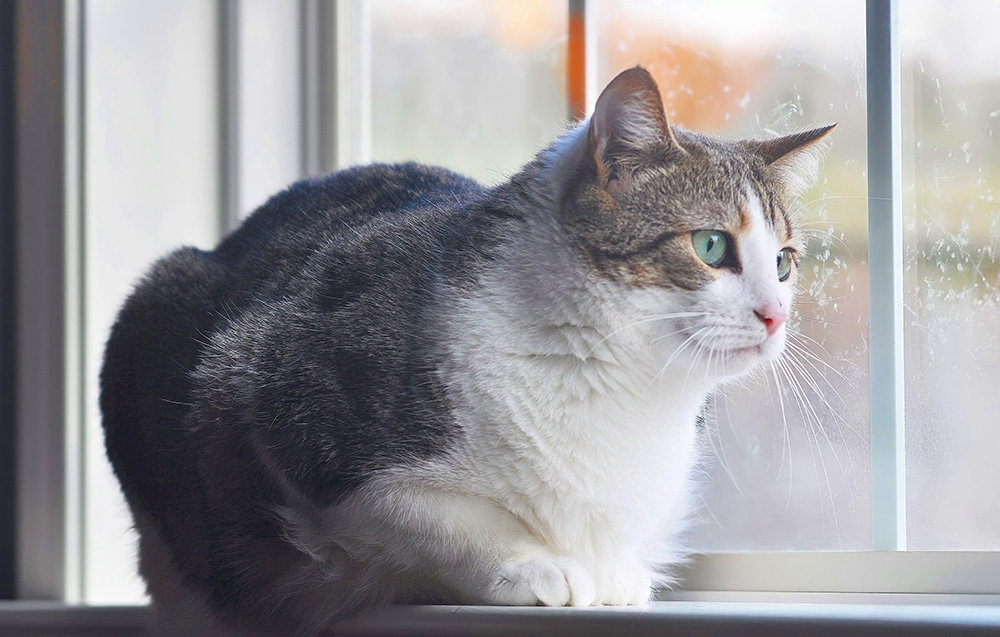

Frequently Asked Questions
How is Manx syndrome diagnosed?
Although a vet may suspect that a cat has Manx syndrome based on their physical appearance (i.e., an absent or a short tail) and the clinical signs they’re showing, diagnostic tests are necessary to confirm the diagnosis and to exclude other diseases that can look similar.
- Physical exam including a neurological exam
- X-rays
- Magnetic Resonance Imaging (MRI)
- Myelography to visualize the spinal cord
- Urinalysis and urine culture
Can Manx syndrome be prevented?
Manx syndrome can be prevented by no longer breeding tailless cats. Some organizations feel that breeding cats without tails, simply for human gratification, is unethical. Cats use their tails for balance and to communicate with other cats. There is no benefit to breeding a cat without a tail, and in some cases, it’s detrimental to the health and wellbeing of the animal because of the associated spinal abnormalities.

Conclusion
Manx cats are known for their shortened or absent tails. Unfortunately, this defining feature is linked to a range of spinal and neurological defects known as Manx syndrome. While not all tailless cats are affected, some will develop issues with urination, defecation, and hindlimb movement. These issues range from mild to severe, with the degree of severity depending on how badly the cat’s spinal cord is affected.
While there’s no curative treatment for Manx syndrome, it’s still possible for some of these animals to enjoy a good quality of life with the right care.
- You might also be interested in: Can Cats Have Bipolar Syndrome? Our Vet Explains
Featured Image Credit: slowmotiongli, Shutterstock

